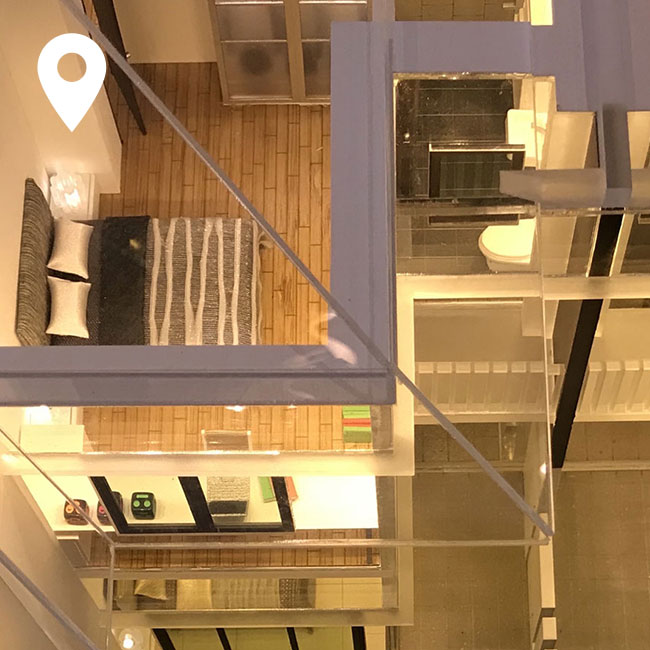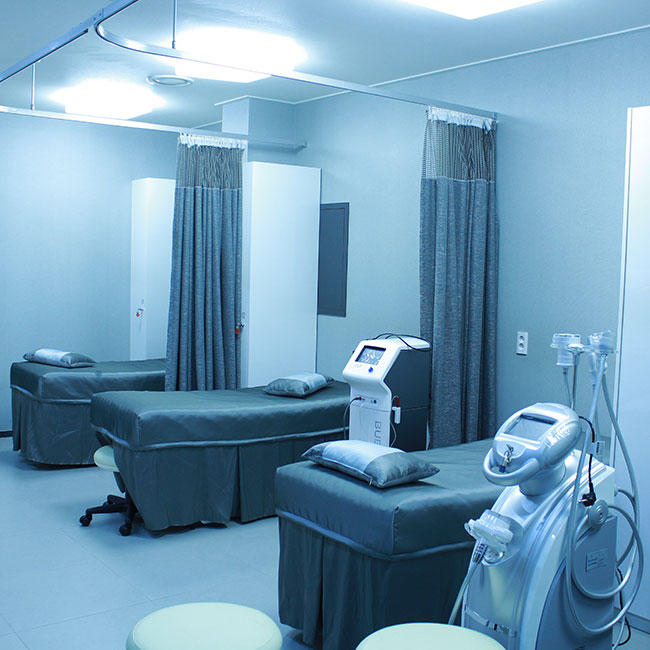Solutions
Underwater Communications
In the last years, the number of human activities in underwater environment are steadily increasing. Consequently, there is an increasing need for systems and devices to monitor and explore marine depths, ranging from buoys and boats, to Underwater Wireless Sensor Networks (UWSN), Remotely Operated Vehicles (ROVs) and Autonomous Underwater Vehicles (AUVs). These systems often require high bandwidth – low latency transmissions that enforce the use for cumbersome and limiting wiring, or demand the device regular stop and extraction for data download by physically connecting to it in a dry environment. The main factor behind these limitations is the strong attenuation of radio waves in water, that hinders the use of common wireless technologies in the marine environment. For a lack of a better option, acoustic modems became the most diffuse solution, although strongly limited in bitrate and latency.
In this scenario, Underwater Optical Wireless Communication (UOWC) is an alternative technology that can address the limitation of bandwidth and latency. Thanks to the use of visible light, UOWC supports wireless communications in the framework of affirmed standards, granting high bitrates with negligible latency up to a range of hundreds of meters. This enables the full integration of submarine systems in monitoring networks harvesting real-time data and leveraging a computation capacity way more complex than that available on support platforms.

Li-Fi
Wi-Fi technology revolutionized devices connectivity in indoor or limited environments, granting easy and stable connectivity. However, the advent of new informatic threats and wide band applications highlights more and more the limits of this technology. Exploiting the light is possible to overcome these limitations leveraging its intrinsic characteristics, such as the wide unlicensed modulation bandwidth and the indoor confinement, where walls represent an unhackable shield to external intrusions. Li-Fi comes as solution to these needs, bringing VLC technology in indoor environment where lighting infrastructure becomes as communication network extended to the whole building, but atomized, if required, to single rooms. Environments that could not benefit from wireless connections, due to functional or security limitations, can now access to the full flexibility and comfort of wireless technology.

Li-Fi
Wi-Fi technology revolutionized devices connectivity in indoor or limited environments, granting easy and stable connectivity. However, the advent of new informatic threats and wide band applications highlights more and more the limits of this technology. Exploiting the light is possible to overcome these limitations leveraging its intrinsic characteristics, such as the wide unlicensed modulation bandwidth and the indoor confinement, where walls represent an unhackable shield to external intrusions. Li-Fi comes as solution to these needs, bringing VLC technology in indoor environment where lighting infrastructure becomes as communication network extended to the whole building, but atomized, if required, to single rooms. Environments that could not benefit from wireless connections, due to functional or security limitations, can now access to the full flexibility and comfort of wireless technology.
Indoor positioning
Satellite-based localization and tracking systems have deeply influenced many different fields, such as insurances, marketing, tourism, environmental and urban traffic monitoring. However, this revolution came to a halt at building entrances, blocked by satellite technology limits and poor performances of RF-based indoor localization systems. These systems clash with natural limits of radio frequencies in indoor environments, such as low precision, local wireless systems interference and implementation costs of both fixed infrastructure and mobile terminals.
In this scenario, an optical positioning system can reach a precision of less than a centimeter, addressing at the same time the issues related to RF compatibility and costs. These advantages are obtained by implementing the localization infrastructure over the lighting one, getting rid of much of the costs and leveraging the absence of interference between optical and radiofrequency systems. Such characteristics enable the development of innovative solutions that were impossible until now: automated factories with independently directed robots; positioning systems operating in RF-sensible environments due to conflicts with other vital systems; active localization in mine tunnels, metal pipes, submarine or other environments in which radiofrequencies are physically hindered.

Internet of Things (IoT)
Everyday billions of smart devices are added to the global network of the objects, the Internet of Things (IoT), an advance limited, until now in some scenarios, by the availability of suitable communication means. Working without the need for radiofrequencies act as an enabling factor in the expansion of IoT in hostile environment, dangerous or impossible for current technologies. Sensor suitable for high-radiation environments or electro-magnetic fields, as in some medical machinery, or underwater sensor networks for environmental monitoring, represent only few of the possibility that can be achieved through optical technology. Moreover, leveraging the lighting infrastructure and the wide availability of cameras is possible to seamlessly integrate monitoring and diagnostic systems that can be queried by simple apps through an optical signal, confined and secure, with no need for expensive custom devices or interfaces.

Internet of Things (IoT)
Everyday billions of smart devices are added to the global network of the objects, the Internet of Things (IoT), an advance limited, until now in some scenarios, by the availability of suitable communication means. Working without the need for radiofrequencies act as an enabling factor in the expansion of IoT in hostile environment, dangerous or impossible for current technologies. Sensor suitable for high-radiation environments or electro-magnetic fields, as in some medical machinery, or underwater sensor networks for environmental monitoring, represent only few of the possibility that can be achieved through optical technology. Moreover, leveraging the lighting infrastructure and the wide availability of cameras is possible to seamlessly integrate monitoring and diagnostic systems that can be queried by simple apps through an optical signal, confined and secure, with no need for expensive custom devices or interfaces.
Space & Avionics
The development of reusable rockets and satellite reduction in both size and costs, has enabled an access to space that becomes cheaper everyday. These factors, in the last years, pushed the evolution of human activities outside Earth atmosphere. However, some issues already identified more than 30 years ago still represent a limiting obstacle in the development of innovative projects and further cost reductions.
Cable harness, on board of a spacecraft, could represent a non-negligible share of the total dry mass. The benefits of its reduction relates not only to weight reduction, an hence to launch and fuel costs, but also to the possibility of innovative spacecraft design. Moreover, the bulk mass of cables requires extensive Assembly, Integration and Test (AIT) phases, in order to check that each and every cable is compliant with launch and electro-magnetic interference requirements.
In this scenario, OWC technology can reduce or mitigate the issues related to weight, electrical isolation, electro-magnetic interference and physical volume that depend on cables. In addition, the same optical terminal could be also used in the AIT phase with no need for additional cables.
Another well-known problem is the high-bitrate transmission between the spacecraft main body and external elements on its surface that can be distant (booms, sensors, solar arrays, etc.), between spacecrafts or orbit to ground. OWC technology, exploiting specific optical units, can offer a complementary or alternative solution to radiofrequency transmissions, especially where these are unable to provide the necessary distance-bandwidth product.

Medical and Sanitary
In modern hospitals, the transmission of diagnostic or monitoring signals can be affected by possible contact contamination due to non-sterilizable materials. The most frequent solution is the use of wireless transmissions; however, this technology is impacted by the problem of electro-magnetic interference (EMI), that can prevent low-signals detections (e.g. in electrocardiography or in electroencephalography). In addition, the presence of strong magnetic fields, as in a Magnetic Resonance Imaging (MRI), or high radiation, the use of radiofrequencies is not feasible.
OWC technology can open a new path to more flexible designs of well-proven systems, enabling mobility and modularity even in machines that are usually cumbersome, as in MRI or a CT scan, or less-stringent EMI requirements for cardiac and cerebral monitoring systems.

Medical and Sanitary
In modern hospitals, the transmission of diagnostic or monitoring signals can be affected by possible contact contamination due to non-sterilizable materials. The most frequent solution is the use of wireless transmissions; however, this technology is impacted by the problem of electro-magnetic interference (EMI), that can prevent low-signals detections (e.g. in electrocardiography or in electroencephalography). In addition, the presence of strong magnetic fields, as in a Magnetic Resonance Imaging (MRI), or high radiation, the use of radiofrequencies is not feasible.
OWC technology can open a new path to more flexible designs of well-proven systems, enabling mobility and modularity even in machines that are usually cumbersome, as in MRI or a CT scan, or less-stringent EMI requirements for cardiac and cerebral monitoring systems.
Cable Replacement
In various scenarios (water, radiation, high-temperatures, weight or simply cosmetic), there are many reasons to replace cables. In many cases, common wireless technologies represent a valid solution with an adequate transmission quality. However, physical or working limitations can, sometimes, prevent the use of a radiofrequency solution. Optical Wireless technology enables in these contexts to overcome limiting factors that block the use of radiofrequencies; moreover, in these some scenarios this technology offers also high-bitrate communication, unlocking new possibilities and concepts, as the cable-less datacenter, with cable-wrapped lines of racks are freed from wiring hindrance, increasing reconfiguration flexibility and reducing cooling and maintenance costs.
